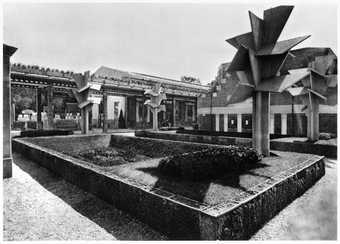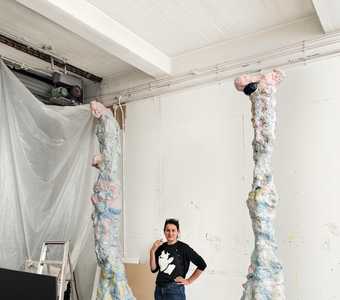
Jan and Joël Martel's cubist concrete trees at the Exposition des Arts Decoratifs, Paris, 1925
I first came across the Martel concrete trees in a book on French modernist gardens. It was around 2002, and I was working on a large installation based on an urban park landscape. It wasn’t until 2005, however, when I was living in Berlin, that the image resurfaced in my mind. Finding I had a bit of studio time on my hands, I decided to explore the Martel trees once again. There are various stories concerning the sculptures: that they were made at the last moment when the four ‘real’ trees wouldn’t take root in the raised planters, or that they were originally intended to be covered with vines. Whatever the case, they were, in the end, a stark and stunning modern presence. A cartoon at the time shows a gardener in front of the structures, hose in hand, scratching his head in confusion.
As sculptural objects they represent an interesting collapse of architecture and nature, and the desire for the two to be compatible. Unlike architecture, however, the geometric planes that create these forms do not articulate a flow of volumes and spaces, and, in conflict with nature, the structures are frozen in the time of their making. With those trees now dead and gone, I became interested, not in looking back at them, but in allowing them to reappear. The first piece I made in relation to them is the photograph Concrete Autumn (Phantom Tree) 2005 – a ghostly image of the Martel tree. It is, in a sense, the tree returning, re-emerging from the past, and all of my following works are the landscapes and objects touched by this returning ghost.
Martin Boyce is an artist living and working in Glasgow. His Clore Commission is at the Clore Gallery Courtyard, Tate Britain.


